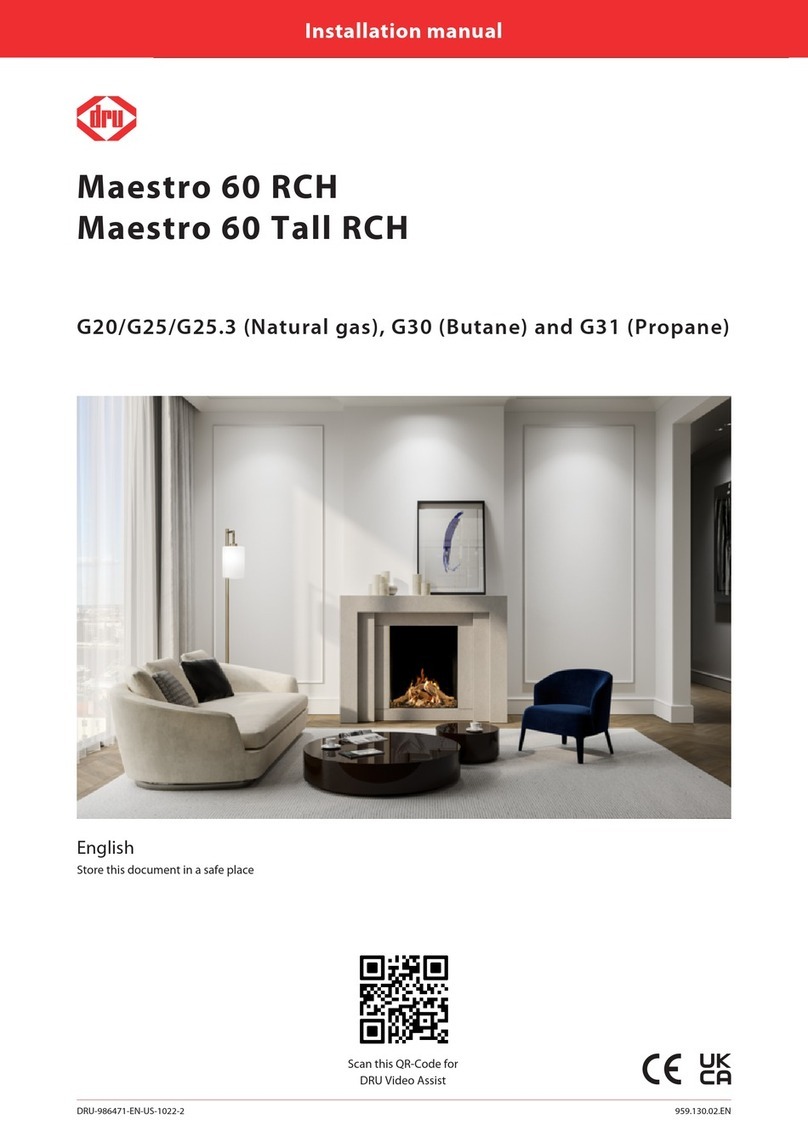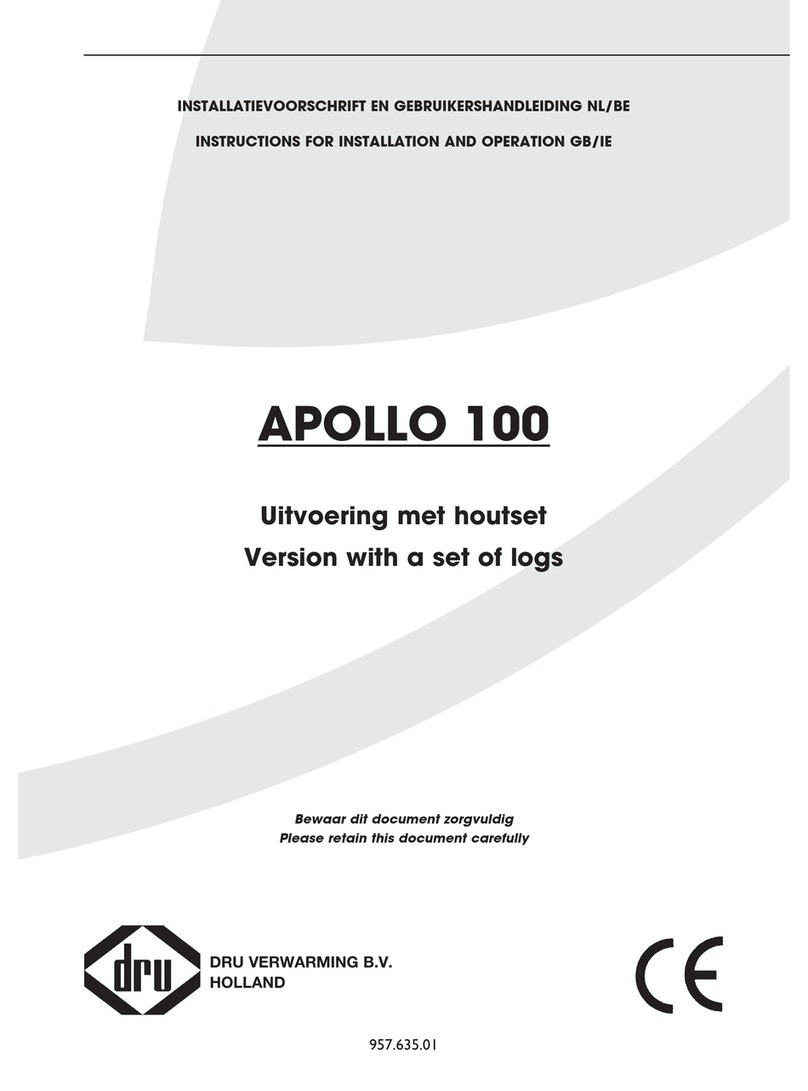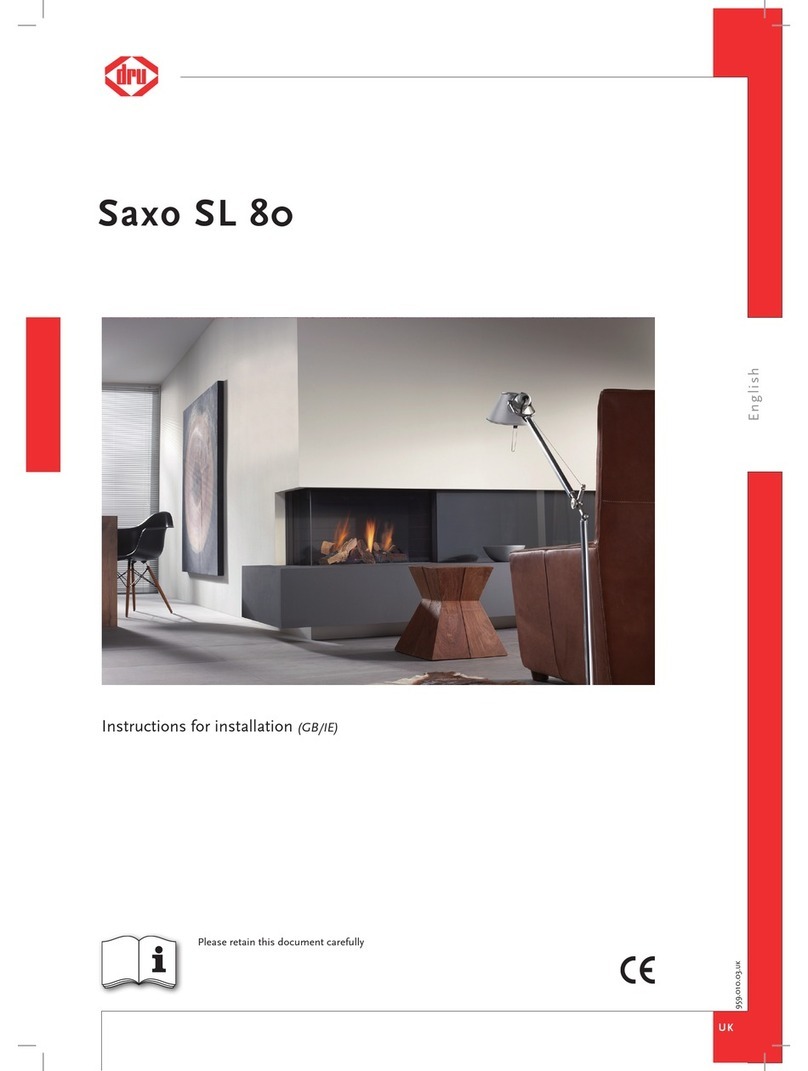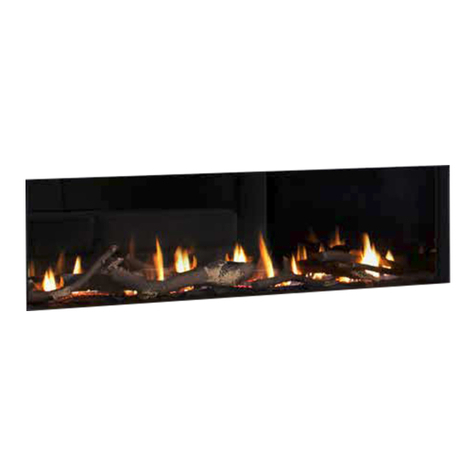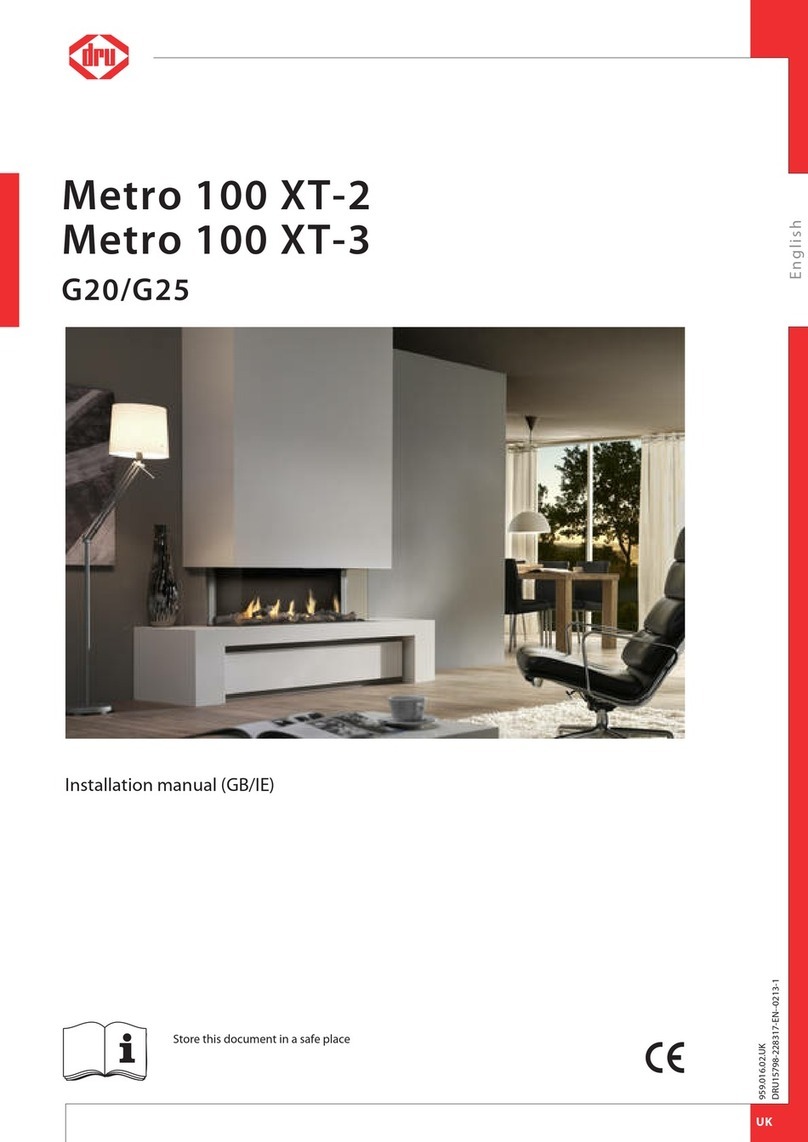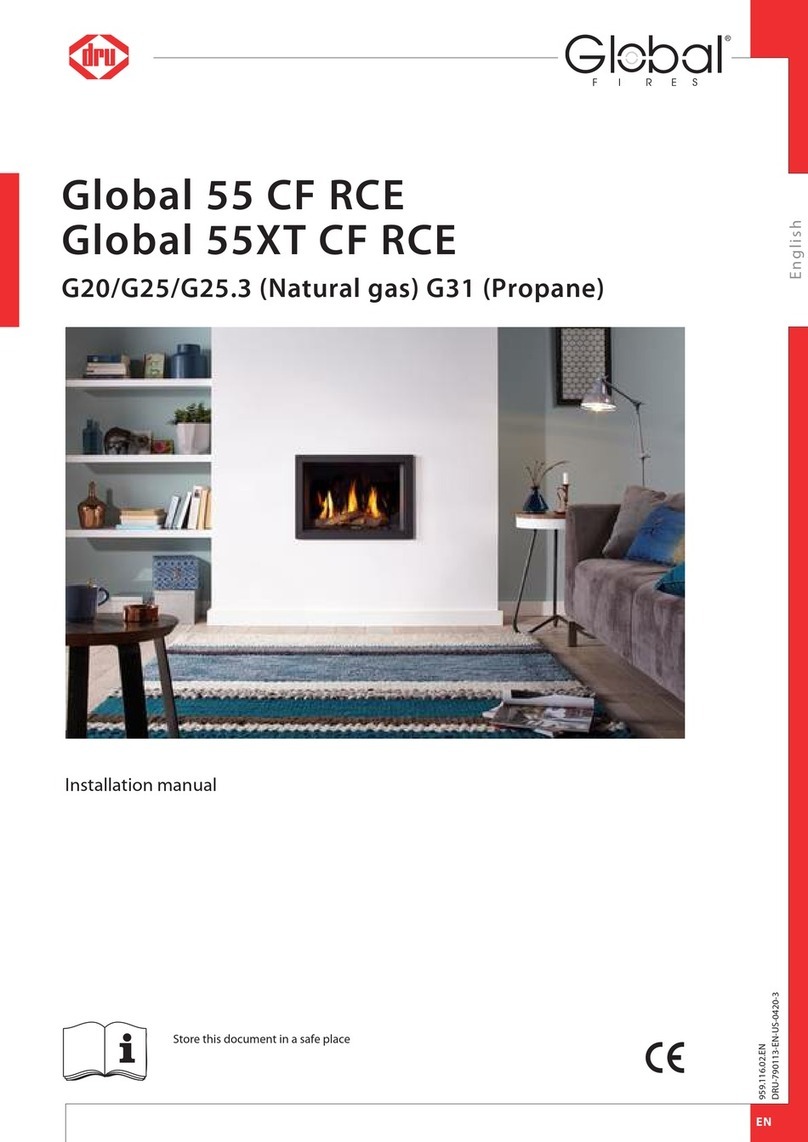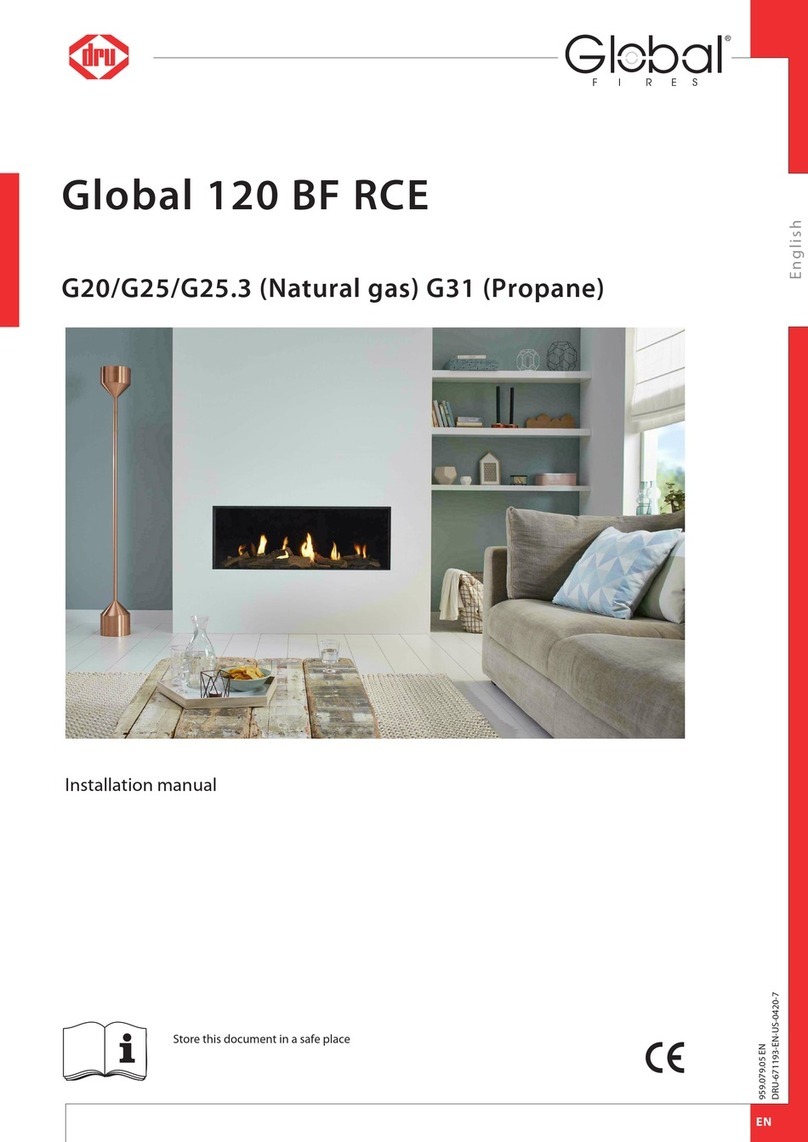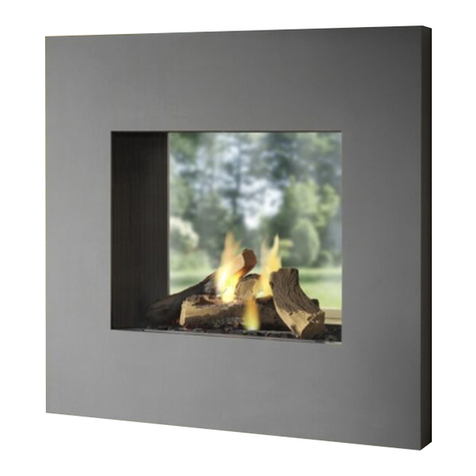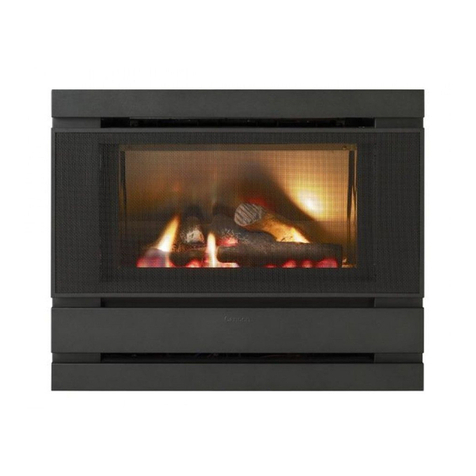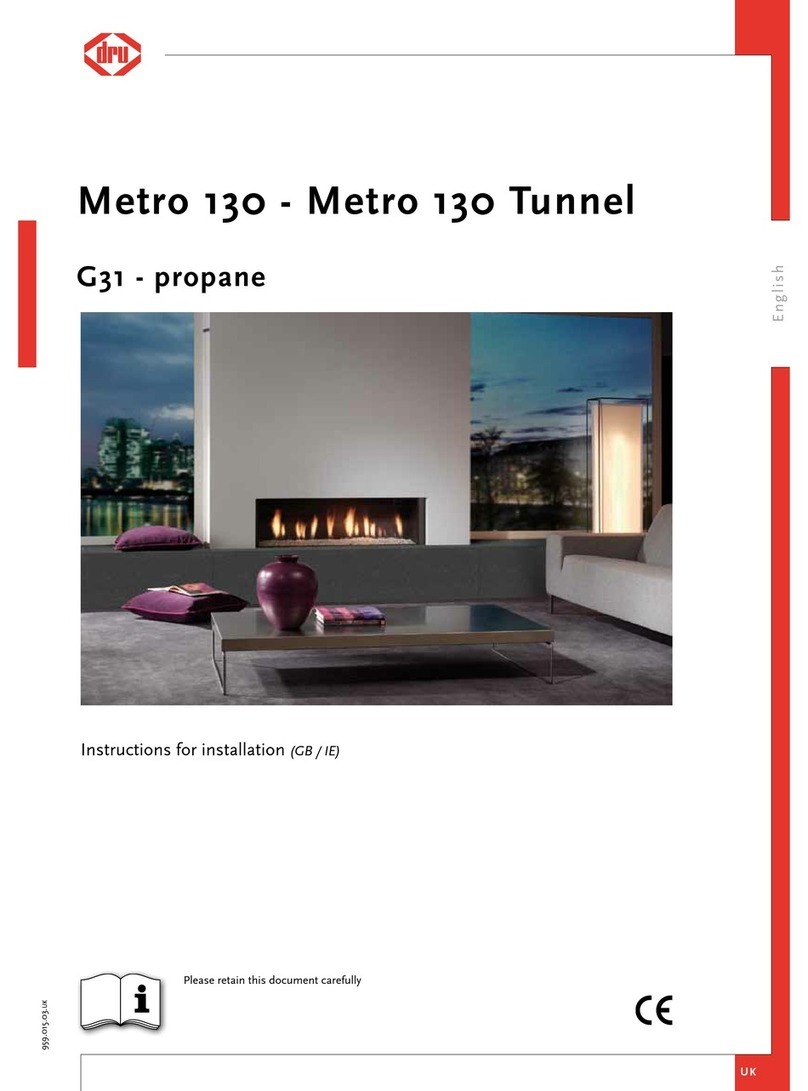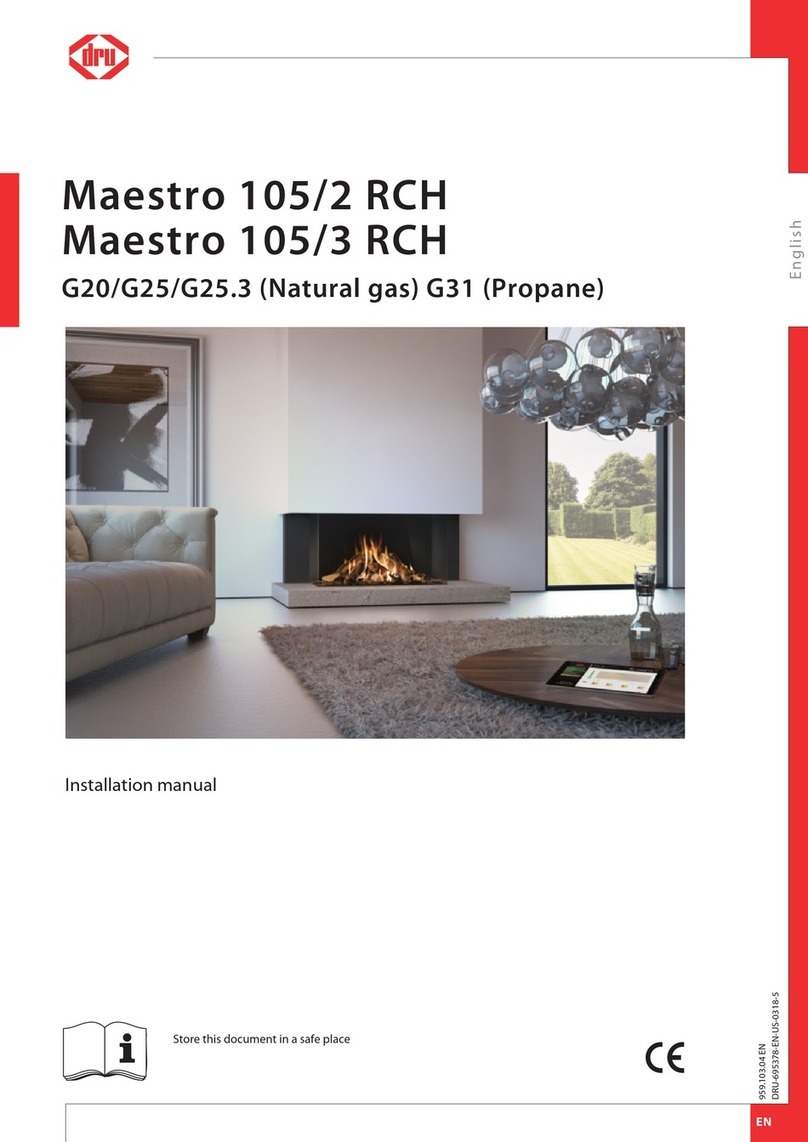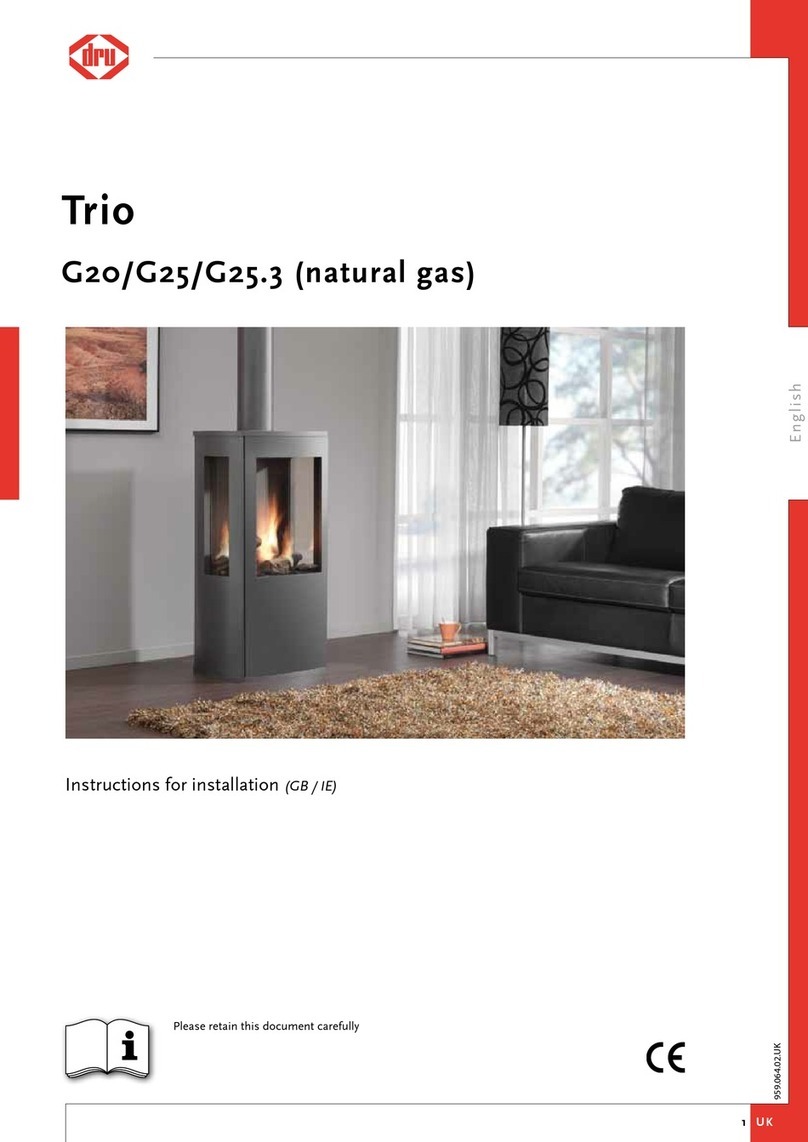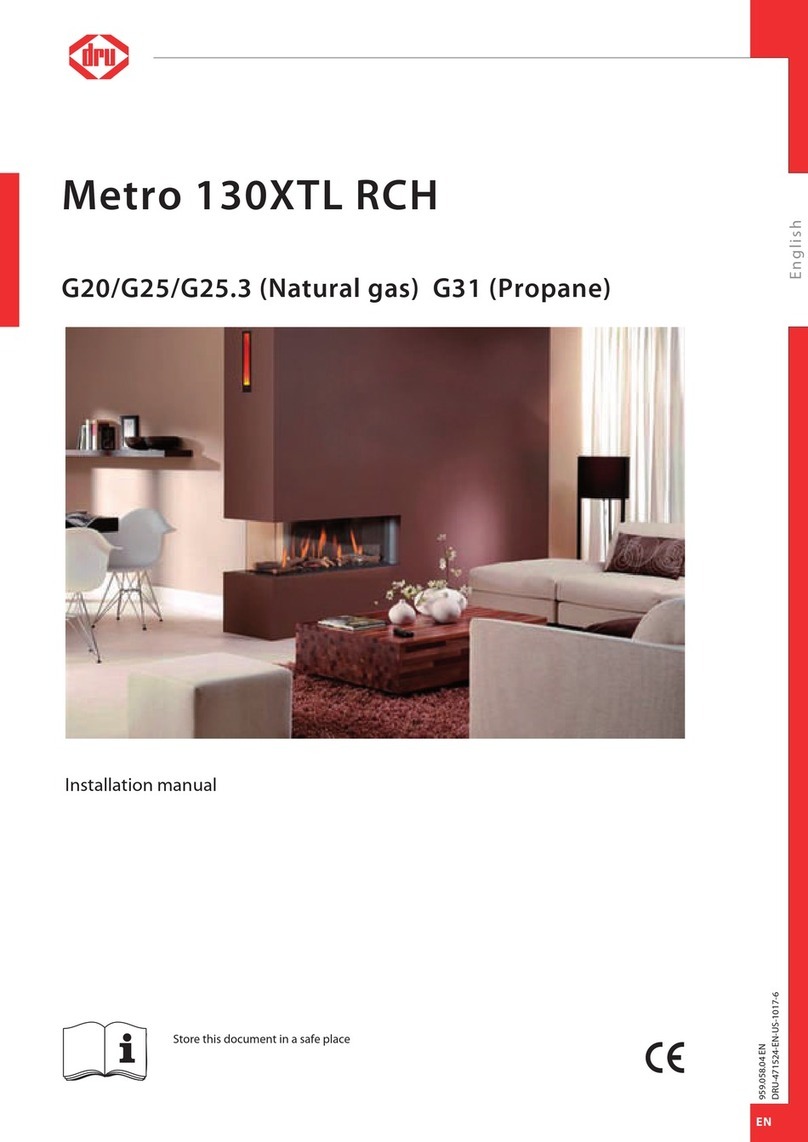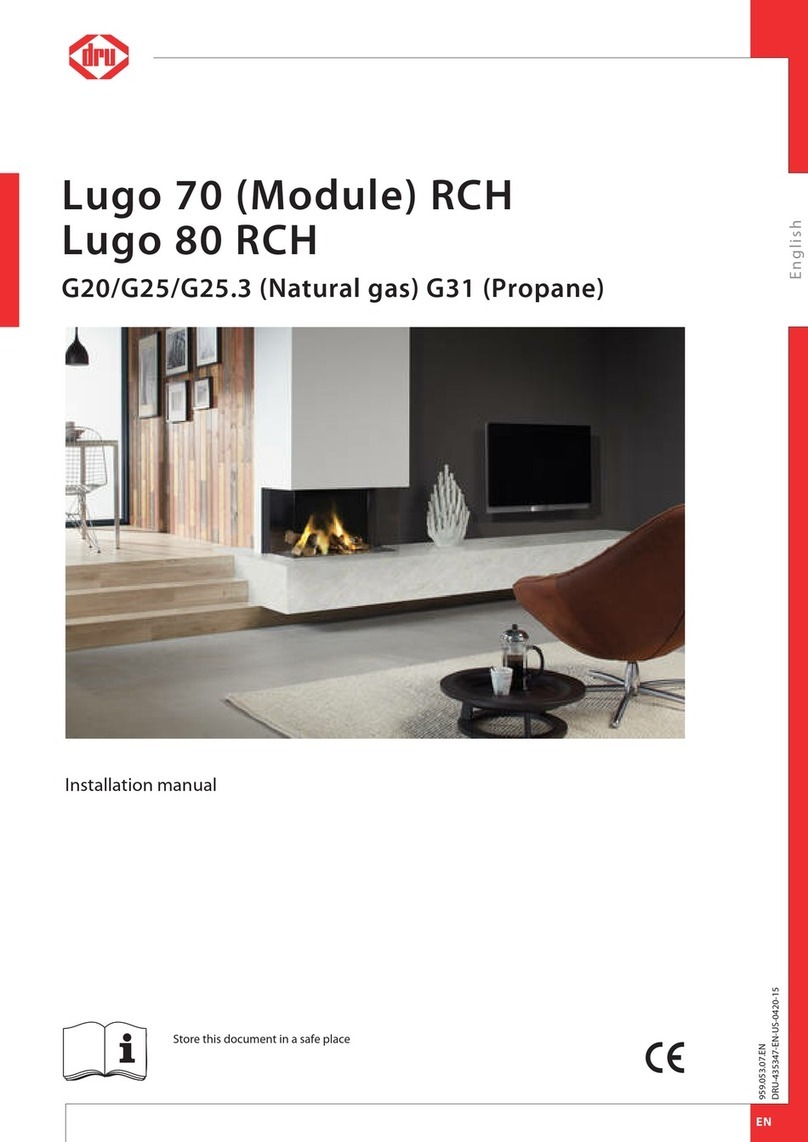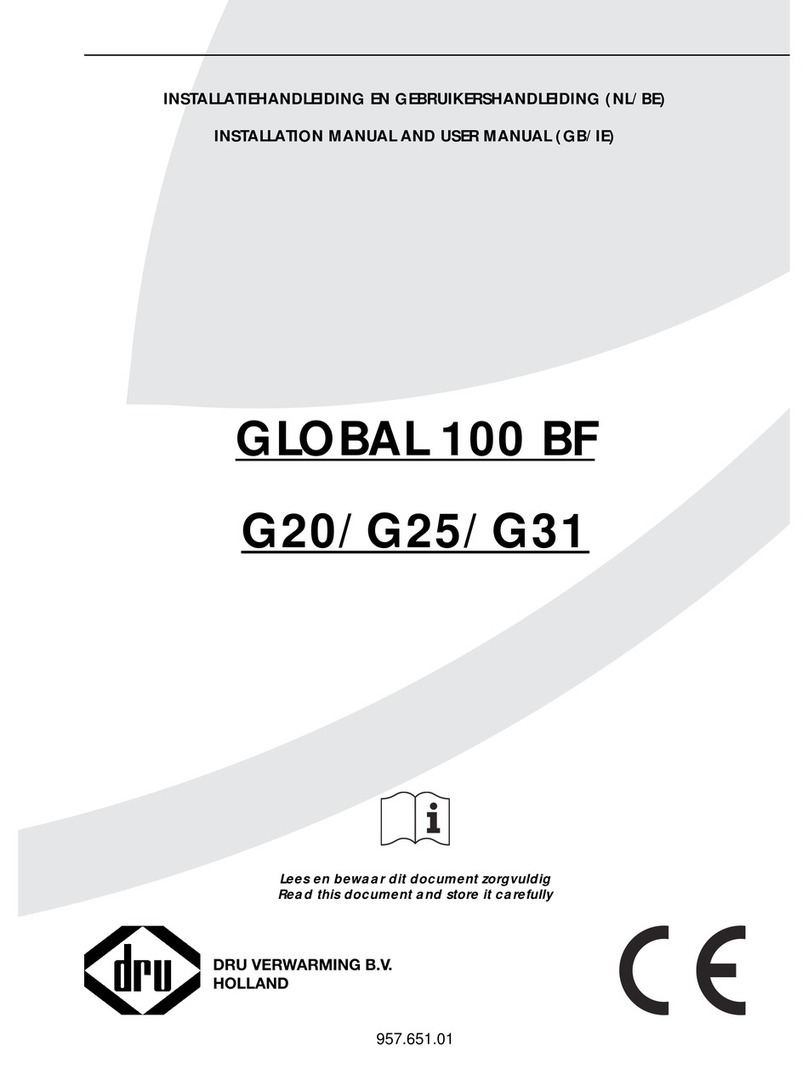8
MILO INSTALLATION MANUAL
English
Table 1: Conditions for the adjustment of the appliance with a wall terminal
G20/G25/G31
Total number of
meters vertical
pipe length
Total number of
meters horizontal
pipe length (excluding
wall terminal)
See gure Air inlet guide Injector
screens**
Bae Distance of
restriction
in mm
1 - 4 >0 - 3 3b NO NO NO OPEN
1 - 4 0* 3c YES YES NO OPEN
* factory setting
** not valid for G31
6.5.2.2 Placing concentric system with wall terminal
Caution
- Maintain a distance of at least 50mm between the outside of the concentric system and the walls, when using a
round system;
- Maintain a distance of at least 23 mm between the outside of the concentric system and the walls, when using a
rectangular system; this distance is xed due to the construction of the rectangular system;
- Maintain a distance of at least 50mm between the outside of the concentric system and the ceiling;
- Use non combustible material for building the concentric in, for instance, a cove;
- Use heat-resistant insulation material when passing through combustible material;
- The rosette (mounting inner plate) of the wall terminal is too small to seal the Ø250mm opening when passing
through combustible material. That is why you should rst apply a suciently large heat-resistant intermediate
plate to the wall. Then, the rosette is mounted on the intermediate plate.
!Caution
- When using rectangular pipes it is only possible to end in the wall from which the appliance is suspended (there is
no bend available for the concentric system);
- When the pipes end at right angles in the appliance, you can start with rectangular pipes, but you must change over
to the round system;
- Some heat-resistant insulation materials contain volatile components that will spread an unpleasant smell for a
prolonged time; these are not suitable.
Place the concentric system as follows:
➠
Build the system up from (the ue spigot of) the appliance.
➠
Connect the concentric pipe pieces, the adapter and, if necessary, the bend.
➠
In case of the rectangular system, you must rst attach a coupling piece on each connection, as described below
(see g.3d):
!Caution
In case of rectangular pipe pieces, the internal pipe is longer at the bottom than the external pipe; the internal pipe
glides in the internal pipe of the ue spigot or the previous pipe piece;
- For reducing a rectangular pipe piece, unscrew the internal pipe from the external pipe;
- Make the internal pipe and external pipe equally long at the top end;
- Retighten the internal pipe;
- Place the coupling piece plus seal on the reduced pipe piece and x it at both front sides by means of 2 self-drilling
screws.
- Place a red seal on the ue spigot of the appliance;
- Then, place the coupling piece on the ue spigot;
- Secure the coupling peace at both front sides using 2 self-tapping screws;
- Place a red seal on the coupling piece;
- Then place a rectangular pipe piece or an adapter to round;
- Secure the rectangular pipe piece or adapter at both front sides using 2 self-tapping screws;
- At each next rectangular pipe piece or at the adapter, place the spacer brackets on the pipe at the same height as the
coupling piece;
- Secure the spacer brackets to the wall, so that the weight of the pipes does not rest on the appliance.
➠
Attach the rst round concentric pipe piece to the adapter using 4 self-drilling screws.
➠
On this connection, apply a clip binding with silicon sealing ring.
➠
In case of round pipe pieces, attach a clip binding with silicon sealing ring to each connection.
➠
Use a self-tapping screw to x the clip binding to the pipe on locations that cannot be reached after installation.
➠
In case of round pipes, apply sucient brackets, so that the weight of the pipes does not rest on the appliance.
➠
Determine the remaining length of the wall terminal;
➠
Make sure the wall terminal has the right dimensions.
GB
95902801_GB Install.indd 895902801_GB Install.indd 8 12-7-10 11:2412-7-10 11:24

